Overview
Choosing the right web design and development company can feel overwhelming, especially for startup founders navigating this critical decision. You may find yourself questioning how to assess your unique needs, what criteria to prioritize, and how to ensure effective communication with potential partners. These uncertainties can lead to anxiety, as the success of your project hinges on finding a collaborator who truly understands your vision.
It's essential to set clear goals and identify your target audience, yet these steps can often seem daunting amidst the myriad of choices available. Maintaining open dialogue throughout the project is crucial, but it can be challenging to establish that connection from the outset. By addressing these pain points, we can help you feel more confident in your decision-making process.
At RNO1, we understand the emotional journey of selecting the right partner. Our structured approach emphasizes the importance of aligning with a company that resonates with your objectives and can successfully execute your web development goals. We encourage you to share your experiences and concerns, as fostering a supportive community is at the heart of what we do. Together, we can navigate this journey and ensure that your startup finds the ideal partner to bring your vision to life.
Introduction
Choosing the right web design and development company can feel overwhelming for startups eager to carve out their online identity. The digital landscape is evolving at a breakneck pace, and it’s essential to understand the unique needs of your business. This understanding is key to forging a successful partnership.
As you embark on this journey, consider the steps outlined here to help you navigate the selection process:
- Define your specific goals
- Evaluate potential agencies
Each step is crucial. What factors should you prioritize not only to find the right fit but also to cultivate a collaborative relationship that truly brings your vision to life? Remember, you’re not alone in this; many founders have faced similar challenges and emerged stronger. Together, let’s explore how to make this process a little less daunting and a lot more rewarding.
Understand Your Startup's Unique Needs
Begin by conducting a thorough assessment of your startup's objectives. It’s essential to understand the challenges you face in establishing a strong online presence. Let’s explore how you can navigate this journey together:
- Define Your Goals: Clearly articulate what you want your website to achieve. Whether it's lead generation, eCommerce, or brand awareness, having specific goals is crucial. In 2025, effective web creation is pivotal. Did you know that ? This fact underscores the importance of your site’s visibility. Furthermore, web aesthetics impact 94% of potential customers' initial perceptions. This highlights how vital it is to cultivate a robust online presence. are designed to drive operational resilience, helping you stand out in a competitive landscape.
- Identify Your Target Audience: Understanding your potential clients' needs is essential for customizing your online platform's appearance and features. Statistics reveal that , and 67% assert that product visuals greatly influence their buying choices. Knowing your audience's preferences will guide your design choices. As Matt Loy wisely states, "Good UX guarantees that visitors can effortlessly explore an online platform and locate what they require." ensures that your online presence resonates with your target audience, enhancing engagement and conversion rates.
- List Required Features: Compile a list of essential features, such as responsive layout, content management systems, or specific integrations. With 90% of online platforms utilizing , ensuring your site is mobile-friendly is essential, especially as 54.67% of all online traffic originates from mobile devices. Moreover, approximately 73% of companies emphasize aesthetics for brand differentiation, underscoring its significance in achieving your startup's objectives. RNO1's results-driven approach guarantees that your website will incorporate essential features that align with your business goals.
- Set a Budget: Determine how much you can invest in website creation and development, as this will influence your options. Website creation costs can vary from $500 to $10,000, depending on complexity and features. Having a clear budget will assist you in finding the right fit. ensure that you receive maximum value for your investment, driving measurable success for your startup.
By clarifying these aspects, you will establish a solid foundation to communicate your needs to potential agencies. This organized method not only improves your chances of success but also aligns your startup's overarching objectives with the strategy of your web design and development company, supported by RNO1's comprehensive branding and digital solutions. Together, we can create a path toward achieving your vision.
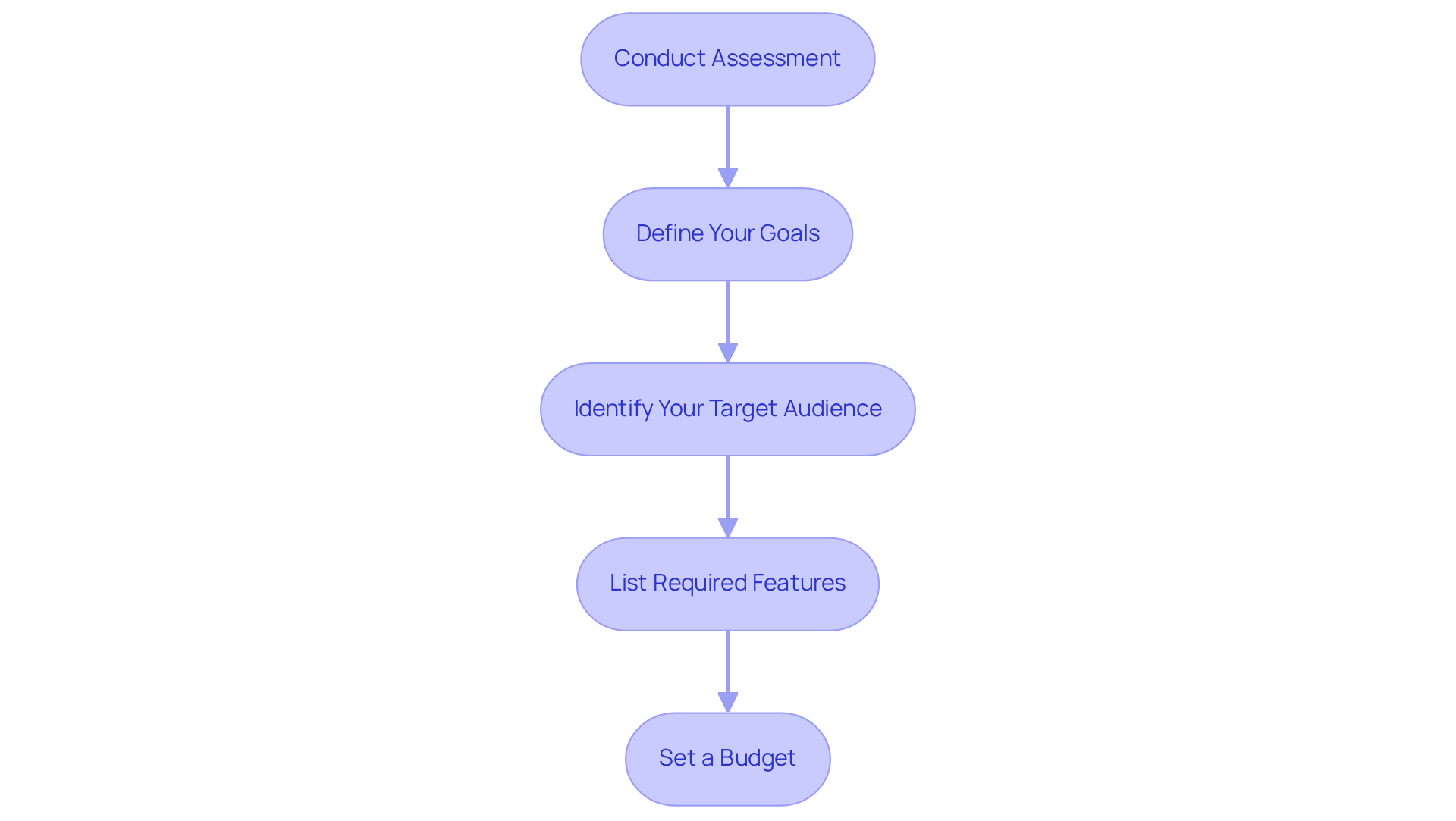
Evaluate Key Criteria for Selection
When you're on the journey of selecting a , it can feel overwhelming. You want to ensure that your vision is brought to life in a way that . To help ease this process, consider these important criteria:
- : Look for an agency that has a proven track record with the technologies and platforms that matter to your project, such as WordPress or Shopify. Their experience can make a significant difference in the success of your website.
- : Take a moment to review their portfolio. This will give you insight into the aesthetic and functional quality of their past work, helping you envision how they can elevate your own project.
- : Hearing from previous clients can be incredibly reassuring. Seek out feedback that speaks to their satisfaction and reliability, as this can guide you in making a confident choice.
- Communication Skills: Pay attention to how effectively they share ideas during your initial discussions. Clear and open communication is vital for achieving your goals and ensuring a smooth collaboration.
- : It’s essential to ask about and maintenance options once your website is live. Knowing that you have assistance available can provide peace of mind as you move forward.
By establishing these criteria, you can confidently narrow down your options, ensuring that you choose a that truly understands your needs and can support your vision.
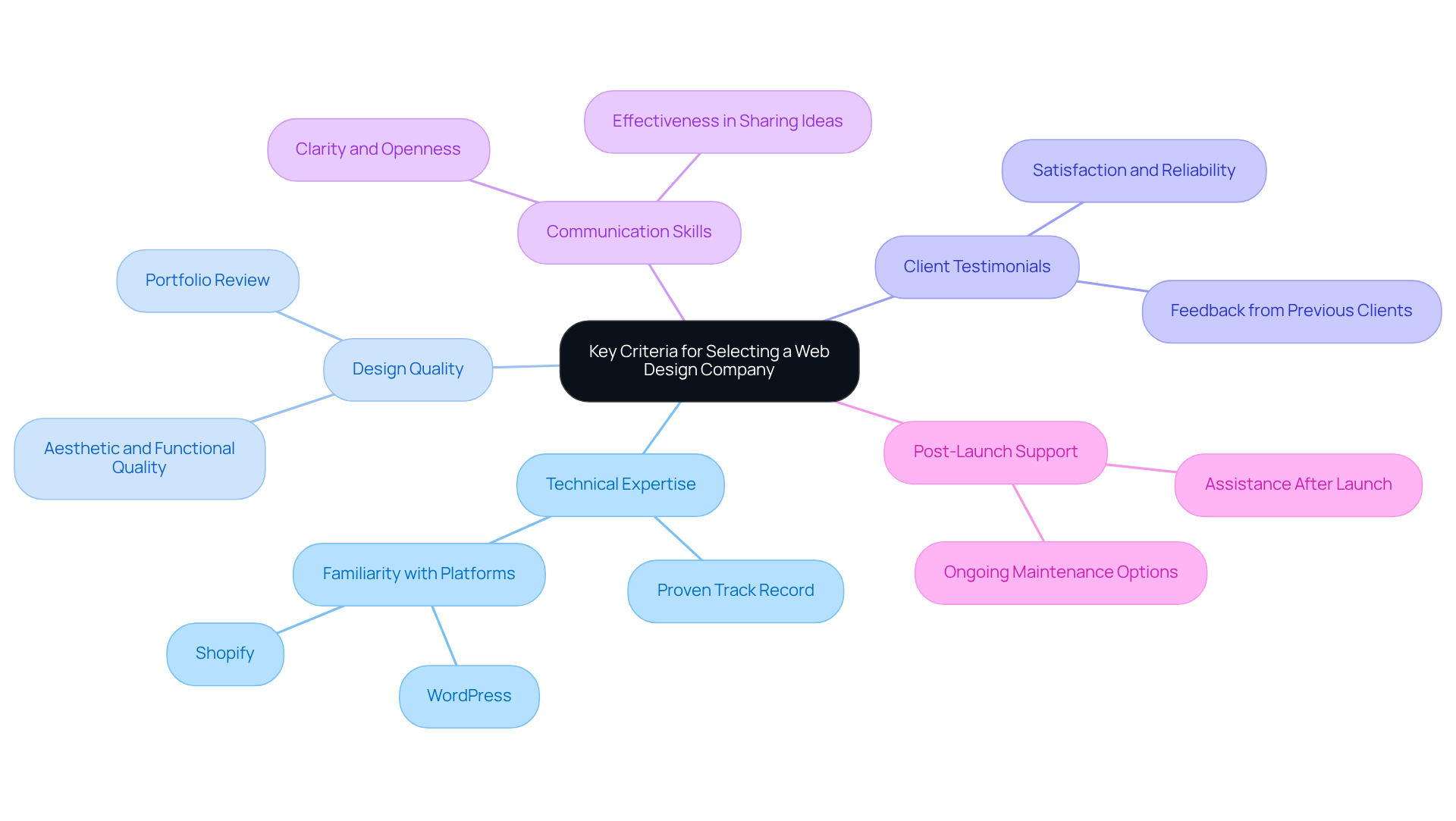
Assess Company Experience and Portfolio
Choosing the right can feel overwhelming, particularly for who are passionate about their vision. It's crucial to find a partner who truly understands your needs and can bring your ideas to life. Here are some thoughtful steps to help you assess the of a [web design and development company](https://blog.rno1.com/4-steps-to-choose-the-right-brand-agencies-san-francisco), ensuring you make a choice that aligns with your goals.
- Review Their Portfolio: Take a moment to explore their past projects. Look for work that resonates with your vision and requirements. Pay special attention to visual appeal, functionality, and —these elements are vital for engaging users. Did you know that 94% of initial perceptions on a website are influenced by its layout? This makes your evaluation all the more important.
- Check Industry Experience: Consider whether the agency has worked with startups or businesses in your industry. Familiarity with your sector can lead to tailored insights and solutions, increasing the chances of project success. Companies with relevant experience often navigate industry-specific challenges more effectively, which can be a game changer for your project.
- Request : Don't hesitate to ask for detailed [case studies](https://uxcam.com/blog/ux-statistics) that outline the challenges faced, solutions implemented, and results achieved. This will give you a and the impact of their work. For instance, organizations that prioritize [user experience](https://maze.co/blog/ux-statistics) see a remarkable 42% improvement in retention, underscoring the importance of effective design.
- : Reflect on how long the agency has been in the industry. A longer track record often signifies stability and reliability, essential qualities for a long-term partnership. Agencies with extensive experience are more likely to have refined their processes and developed a deep understanding of client needs.
By carefully considering these factors, you can make a more informed decision when selecting a web design and development company. This thoughtful approach will help ensure that your chosen agency aligns with your startup's aspirations and industry demands, paving the way for a successful collaboration.
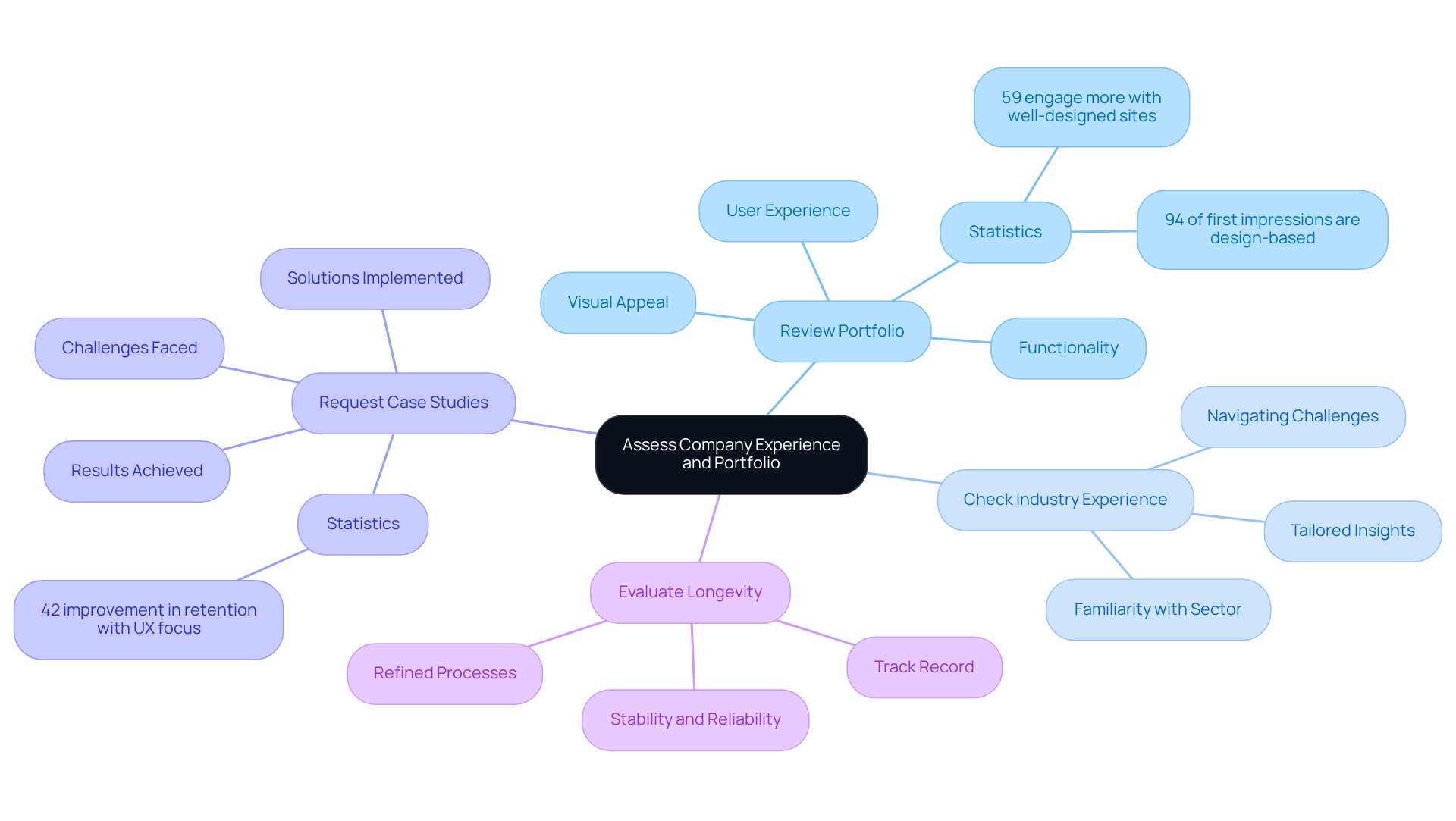
Prioritize Communication and Collaboration
In the realm of web design projects, and collaboration can often feel like daunting challenges. Many founders find themselves grappling with misunderstandings and misalignments, which can lead to frustration and even . It’s essential to recognize that these can significantly impact the success of your venture.
To address this common issue, consider implementing a few supportive strategies. Begin with : Schedule thoughtful discussions with potential agencies to delve into your project. Pay attention to their listening skills and responsiveness to your needs; after all, effective communication is crucial for success. Research highlights that teams communicating effectively can experience productivity boosts of up to 25% (Saisuman Revankar).
Next, Establish Communication Channels: Identify your preferred methods of communication, whether it’s through email or management tools, and agree on how often updates will be shared. With 74% of working adults relying on (Pumble.com), it remains a vital tool. However, integrating management platforms can enhance clarity and efficiency in your interactions.
It’s also important to Set Clear Expectations: Clearly outlining roles, responsibilities, and timelines can foster alignment among all parties involved. This clarity helps to reduce misunderstandings, which, according to industry research, are responsible for 70% of corporate errors.
Moreover, Encourage Feedback: and appreciated. This approach not only enhances the project but also contributes to a more satisfying experience for everyone involved. Studies indicate that organizations prioritizing often see improved employee satisfaction and performance.
By focusing on these elements, you can create a collaborative atmosphere that significantly boosts the success of your . Case studies reveal that startups with a web design and development company frequently achieve better outcomes, underscoring the importance of these strategies in fostering . Remember, you’re not alone in this journey—embracing these practices can lead to a more rewarding and productive collaboration.
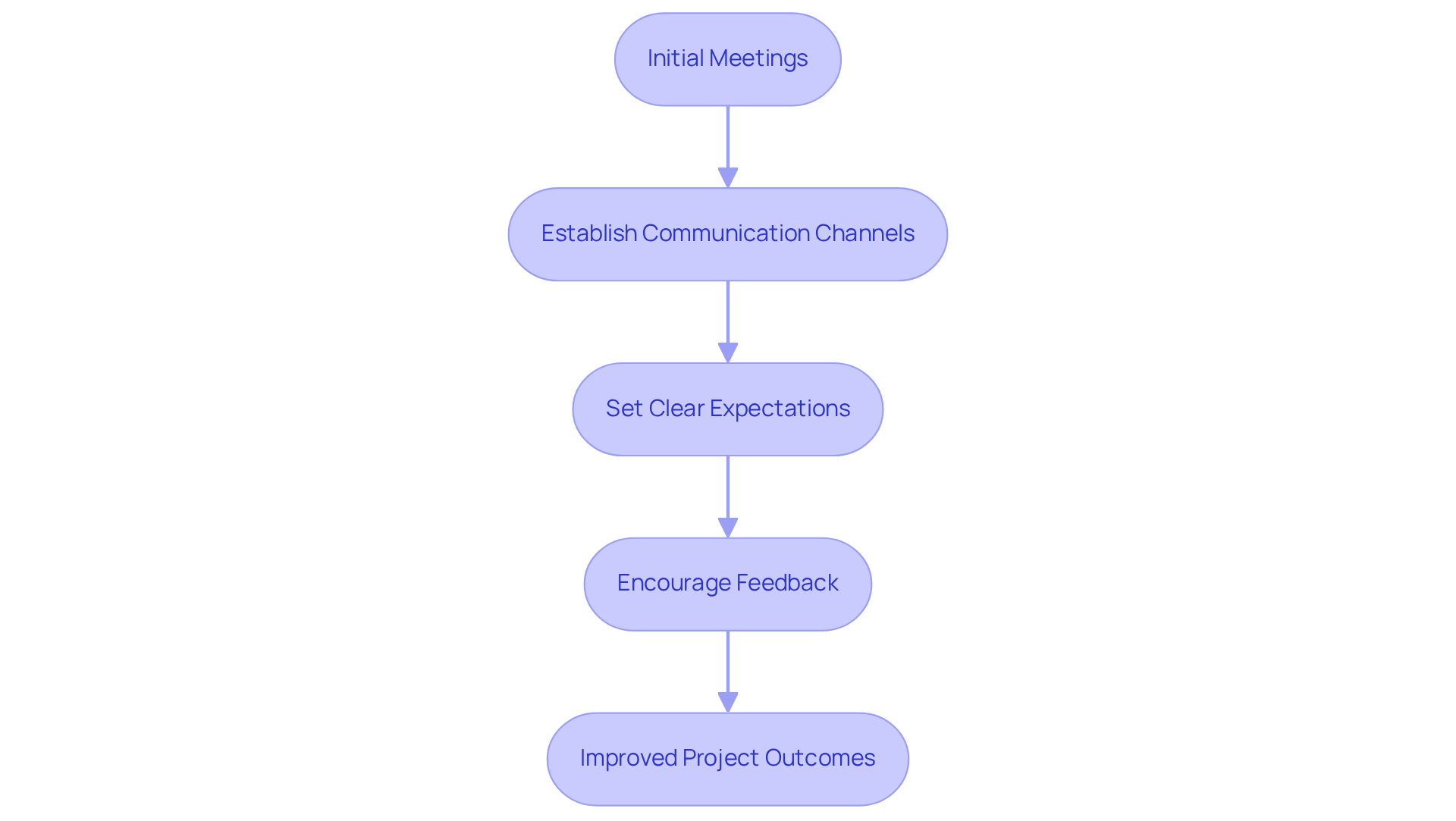
Finalize Your Choice and Set Expectations
Selecting a can feel overwhelming, but following the right steps can ease your journey and set clear expectations.
First, consider . Engaging in , timelines, deliverables, and payment terms is essential. This not only aligns both parties but also fosters a sense of comfort with the agreement, helping to that can arise.
Next, drafting a contract is crucial. A formal contract outlines all agreed-upon terms, protecting both parties and clarifying responsibilities. By investing time in efficient , a web design and development company can greatly reduce misunderstandings and conflicts, which are common challenges in their endeavors. Remember, organizations that manage their initiatives effectively waste 13 times less money due to successful completion of strategic endeavors. This highlights the in place.
Setting is another vital step in your journey. Establishing key milestones throughout the project allows for . Research shows that having clear milestones can improve execution and reporting, making them essential tools in management. Monitoring these milestones not only helps recognize obstacles but also aids in evaluating the project's status, ensuring it stays on course.
Maintaining open communication throughout the initiative is equally important. Regular check-ins allow for promptly addressing any issues or changes, keeping the project aligned with expectations. It’s interesting to note that 75% of website visitors form perceptions of a company’s credibility based on its site layout, underscoring the .
By following these steps, you can lay a solid foundation for your startup's needs with a web design and development company, leading to a more effective and satisfying collaboration. For instance, the Majestic Wine inquiry form redesign showcases how effective contract and milestone management can lead to improved outcomes; they experienced a 201% increase in form submissions after focusing on .
Remember, you’re not alone in this process. By embracing these practices, you can foster a collaborative environment that nurtures both your vision and the expertise of your web design and development company.
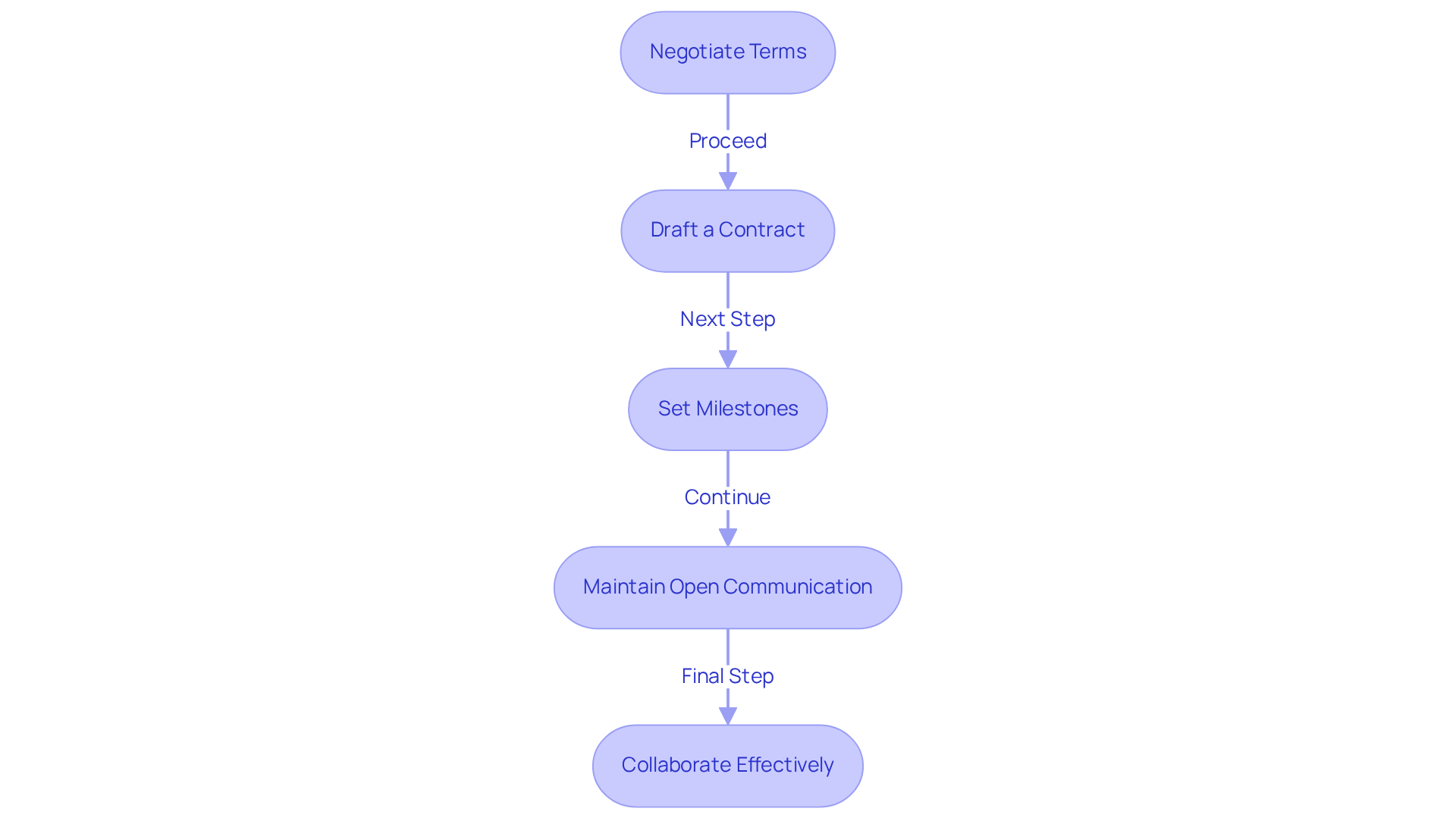
Conclusion
Selecting the right web design and development company can feel overwhelming for startups striving to carve out a meaningful online presence. This journey is not just about finding a service provider; it’s about discovering a partner who truly understands your unique vision and goals. The implications of this choice are significant, as it can shape not only the effectiveness of your website but also the overall success of your brand in a competitive digital landscape.
In this guide, we’ve outlined key strategies to help you navigate this crucial selection process. By defining your objectives and understanding your target audience, you can begin to evaluate potential agencies. Look closely at their experience, portfolio, and communication skills. Each step is designed to empower you as a startup founder. Remember, setting clear expectations and maintaining open lines of communication is vital; these elements nurture a productive partnership.
Ultimately, the journey of selecting a web design and development company deserves careful thought and proactive engagement. By adopting the insights shared here, you can avoid common pitfalls and lay the foundation for a successful collaboration. Embrace these practices to ensure that your online presence resonates with your audience, fostering engagement and driving conversions in our ever-evolving digital world. You’re not alone in this; together, we can build something remarkable.
Frequently Asked Questions
What should I consider when assessing my startup's unique needs for a website?
Begin by conducting a thorough assessment of your startup's objectives, defining clear goals such as lead generation, eCommerce, or brand awareness, and understanding the challenges you face in establishing a strong online presence.
Why is it important to define specific goals for my website?
Clearly articulating your website's goals is crucial because it helps ensure that your site is designed to achieve specific outcomes, such as increasing visibility, generating leads, or enhancing brand awareness.
How can I identify my target audience for my website?
Understanding your potential clients' needs is essential for customizing your online platform. Consider preferences such as the importance of images and product visuals, which significantly influence buying decisions.
What features should I include in my website?
Compile a list of essential features, such as a responsive layout, content management systems, and specific integrations. A responsive design is particularly important as a significant portion of online traffic comes from mobile devices.
How do I set a budget for website creation?
Determine how much you can invest in website development, as costs can range from $500 to $10,000 depending on complexity and features. Having a clear budget will help you find the right fit for your needs.
What criteria should I evaluate when selecting a web design company?
Important criteria include technical expertise, design quality (reviewing their portfolio), client testimonials, communication skills, and post-launch support options.
Why is technical expertise important when choosing a web design agency?
An agency with a proven track record in relevant technologies and platforms can significantly impact the success of your website, ensuring it functions as intended.
How can I assess the design quality of a web design agency?
Reviewing the agency's portfolio will provide insight into the aesthetic and functional quality of their past work, helping you envision how they can elevate your project.
What role do client testimonials play in selecting a web design company?
Client testimonials provide reassurance and feedback about the agency's reliability and satisfaction levels, guiding you in making a confident choice.
Why is post-launch support important for my website?
Knowing that ongoing support and maintenance options are available can provide peace of mind as you move forward after your website goes live, ensuring you have assistance when needed.




